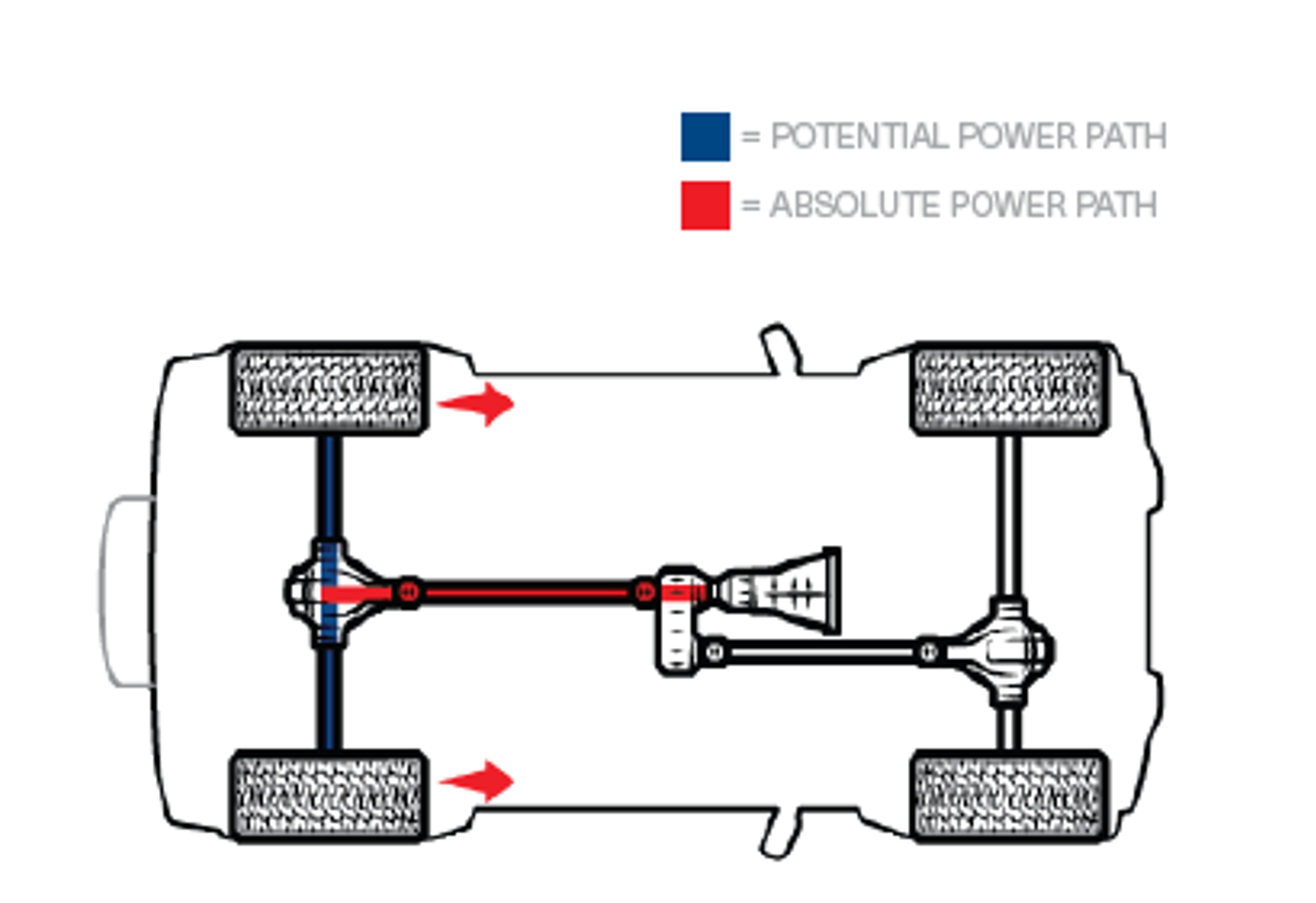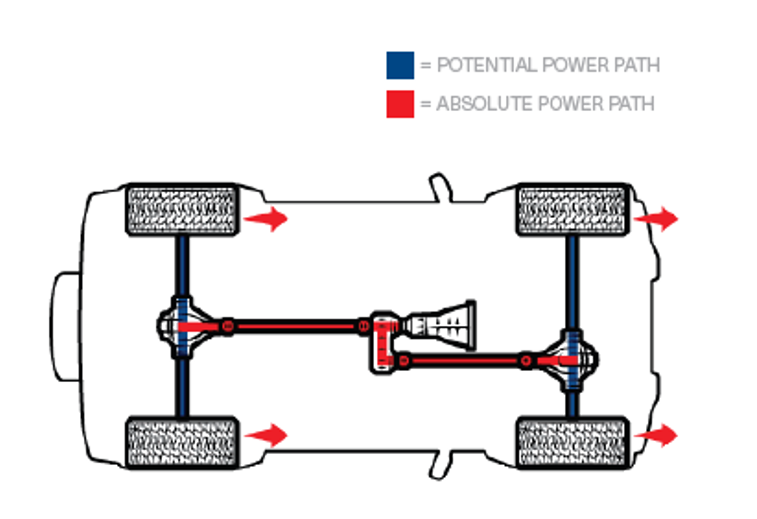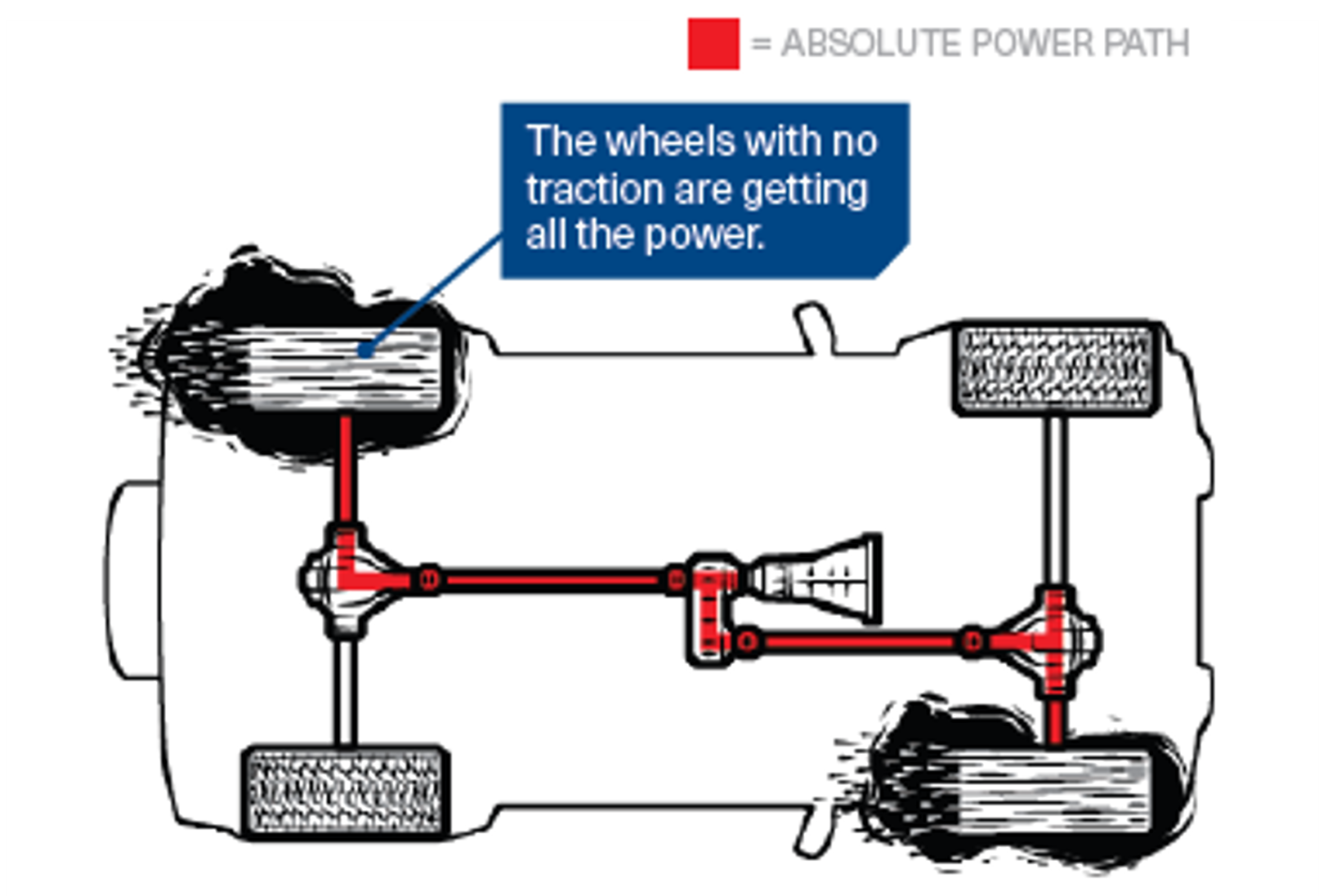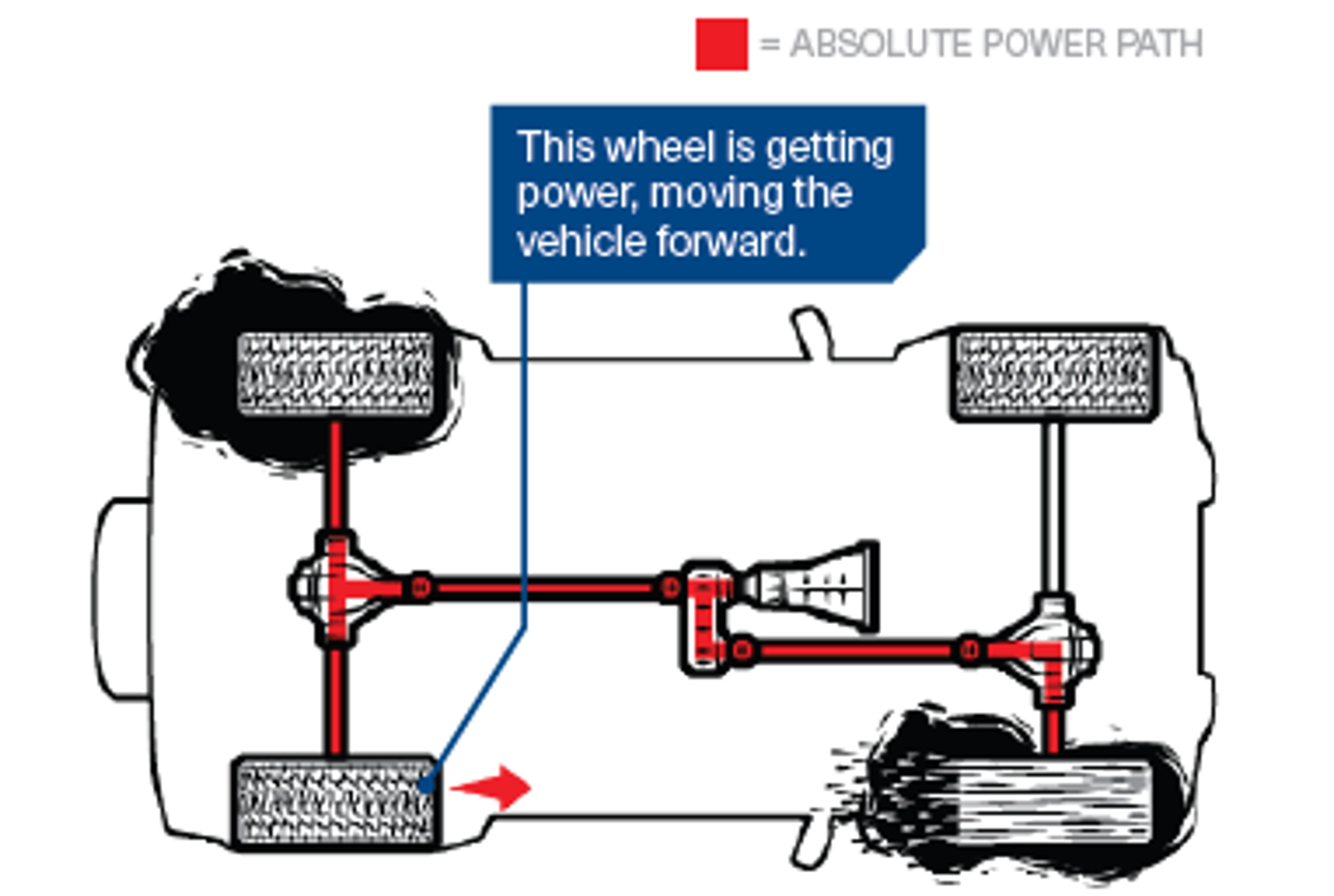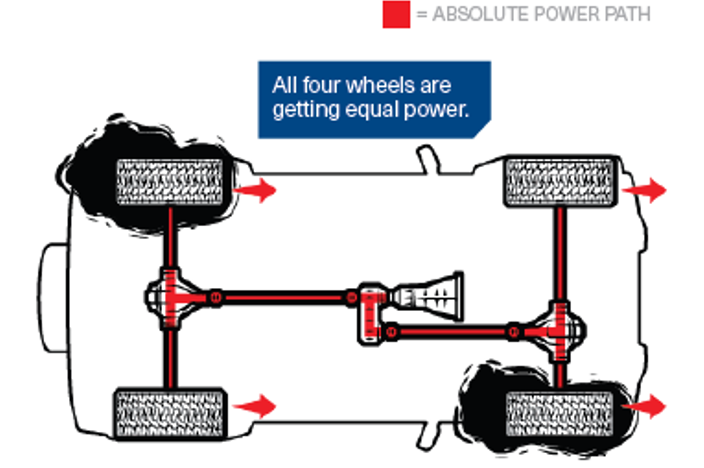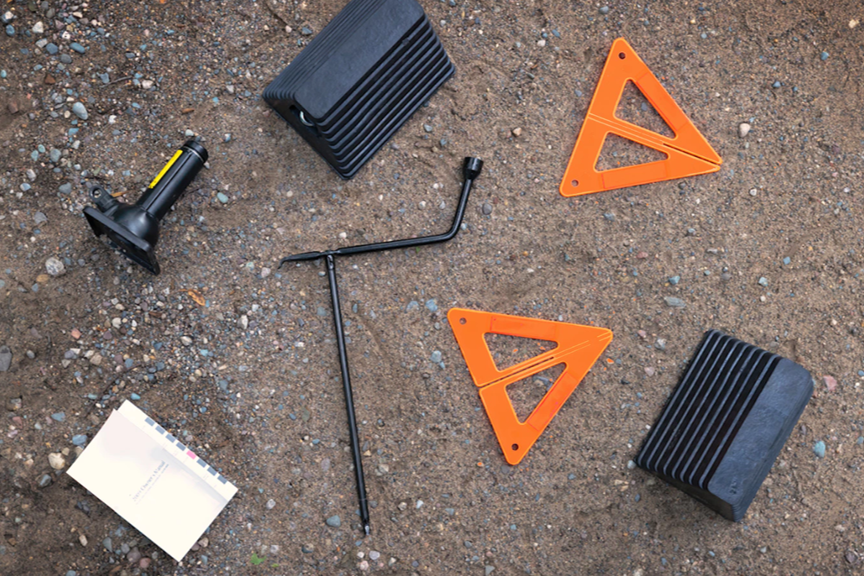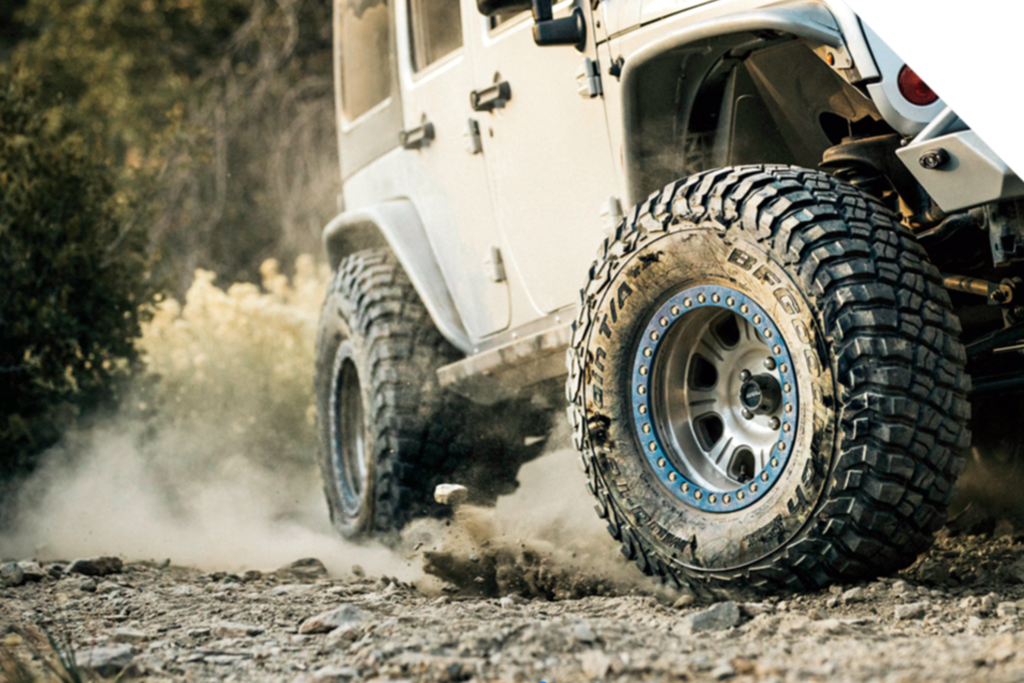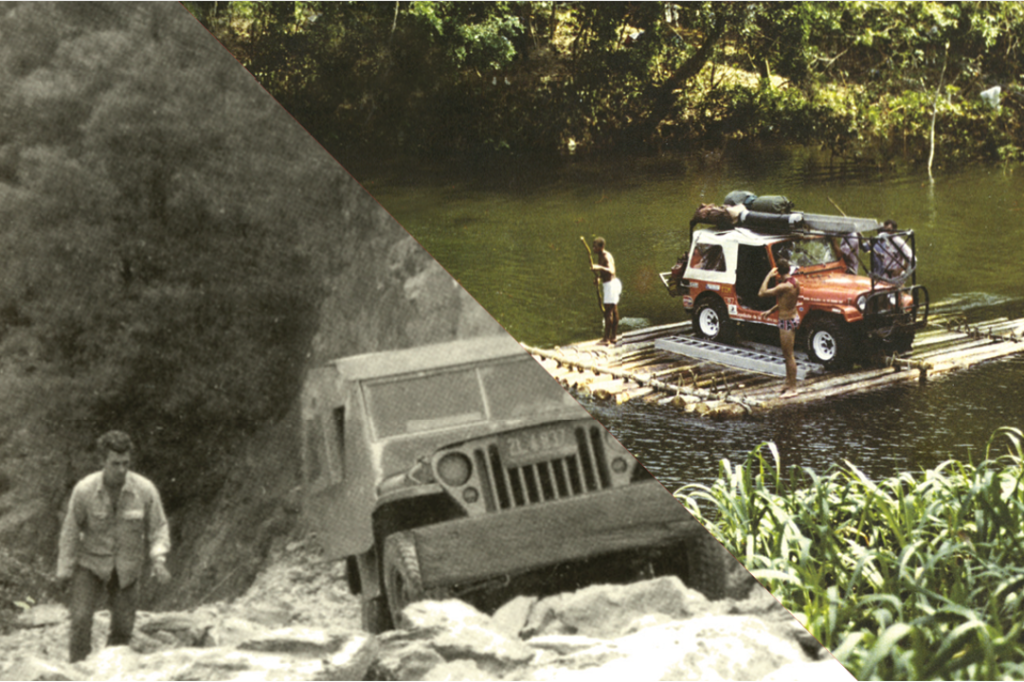Know Your Vehicle
Know your vehicle, inside and out.
Whether fresh from the factory or built in your garage, no two vehicles are alike. Just like no two drivers’ experience and skill levels are the same. Which is why one of the most important ways you can prepare for the rigors of recreational off-roading is to know your vehicle, inside and out.
A great way to start is by attending a local off-road driving course. Here you’ll learn the inner workings of a 4x4 vehicle as well as get expert-guided instruction on how your vehicle performs off the pavement. In the world of four-wheeling, knowledge is power – and a good place to find that knowledge is by actually reading your owner’s manual.
SECTIONS
- DO THE MATH
- TRANSMISSIONS
- FOUR-WHEEL DRIVE SYSTEMS
- DIFFERENTIALS
- VEHICLE MODIFICATIONS
DO THE MATH
Your 17-year-old self will be pleased to know that you can finally put that geometry knowledge to use. Before you head out to the trail, you’ll need to know a few basic angles that will help you identify problematic objects and difficult terrain that your vehicle is not capable of clearing.
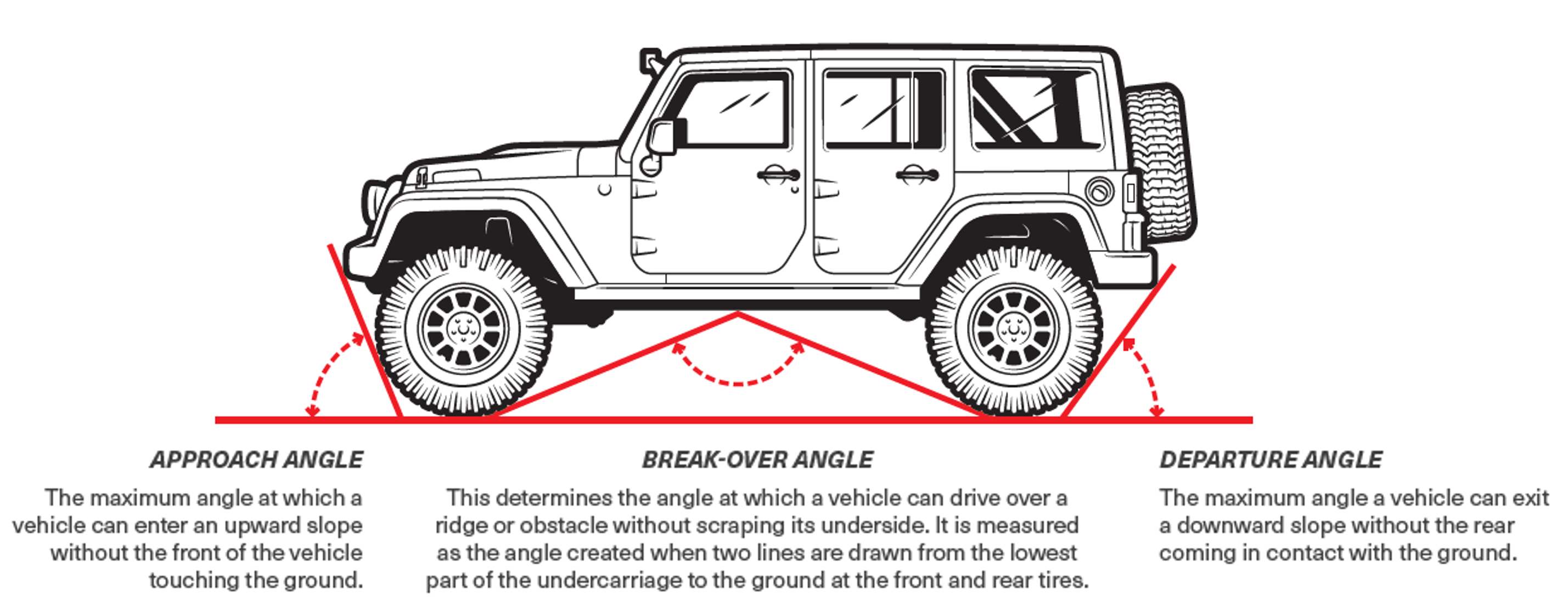
Pro Tip
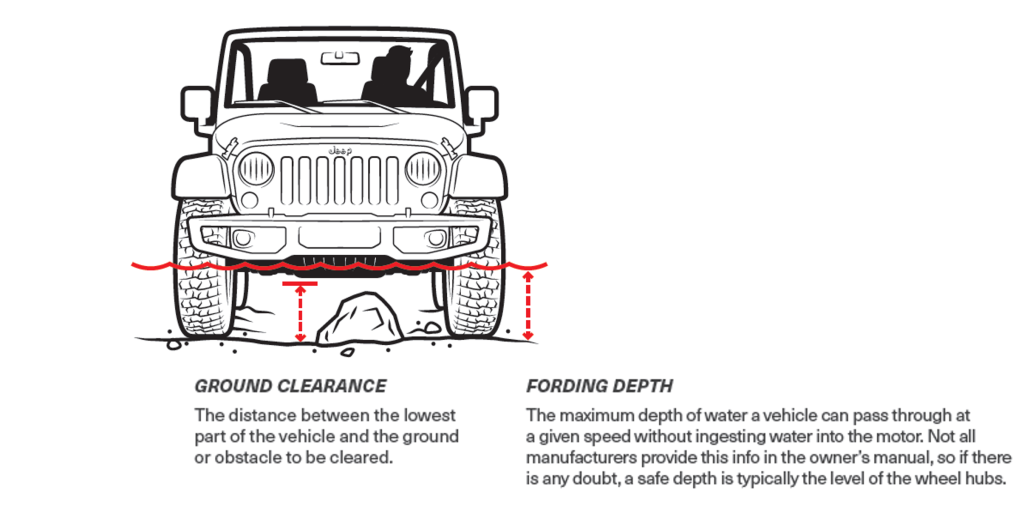
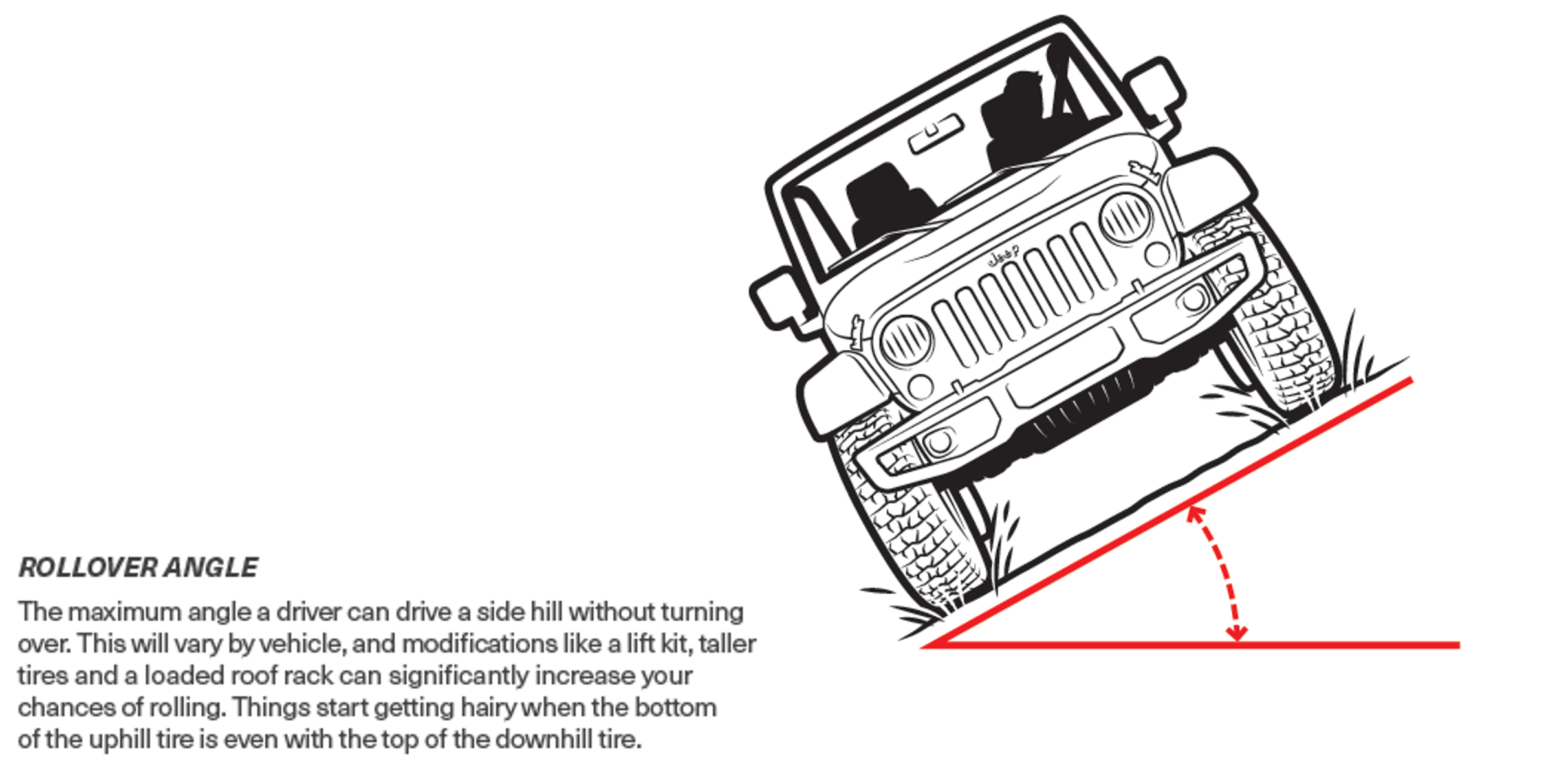
TRANSMISSIONS
There are two common types of transmissions, automatic and manual. In many parts of North America, driving a manual transmission has become a lost art. But for most countries around the world, this is much more common. Each transmission type has advantages and disadvantages for off-road driving. Know how to best utilize your specific transmission.
Automatic
As simple as it may sound, the first thing you’ll need to know is how to put your vehicle in gear. Make sure you can properly locate the gear selector in your vehicle. In older vehicles, the gear shift may be located on the steering column, whereas in newer vehicles, it is often located near the center console. There may appear to be two gear shifters on the floor. The other is actually the transfer case, which will allow you to engage four-wheel drive. Automatics are generally easier to control because you let the transmission do most of the work. Remember, speed is not the answer. Let the vehicle do what it was designed to do.
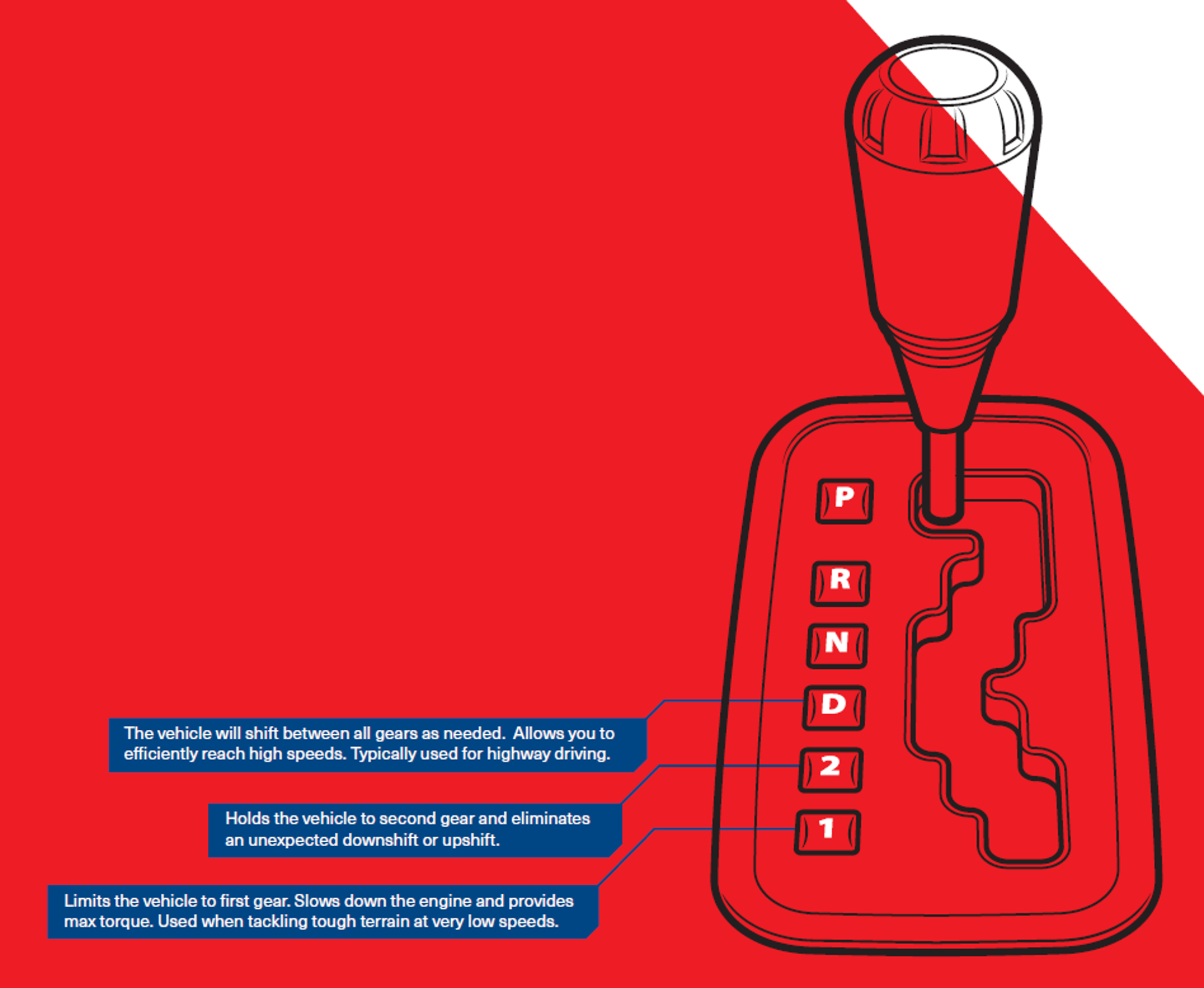
USING YOUR AUTOMATIC TRANSMISSION
- Engine braking may be limited with automatic transmissions. Supply sufficient brake and throttle as your vehicle speeds and slows.
- Gearing down to D1 or D2 and using 4WD Low should allow the vehicle to crawl and idle over obstacles with little to no throttle.
- Use the highest gears possible for climbing. Descend in the lowest gears.
- Using the overdrive button will lock the vehicle out of its highest gear. This is useful when navigating steep hills and difficult terrain – as well as in on-road towing situations.
Advantages
- More user-friendly
- Smooth transition of power
- Less effort
- Easier for towing
- No clutch to burn
- More adaptable to four-wheeling
Disadvantages
- Runs away on downhill slopes
- Cannot push-start
- Cannot stall-start
- Higher repair expenses
- May overheat in tough terrain
LEFT-FOOT BRAKING
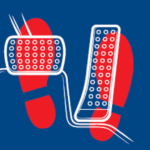
Yes, when navigating the real tough stuff, you should actually brake with your left foot. This allows you to lightly feather both the brake and throttle to control your speed over difficult obstacles. Unless your off-road rig comes equipped with a crawl assistance feature to control your brake and throttle, get that left foot ready to work.
MANUAL
If you have never driven a manual transmission, the trail is not the place to start. Make sure you have mastered the basics before heading off the pavement. Monitoring three pedals and choosing gears must be second nature, so you can focus completely on the ever-changing conditions of the trail.
USING YOUR MANUAL TRANSMISSION
- Keep your foot off the clutch as much as possible. Otherwise not only will you lose forward momentum, but it can also cause the clutch to burn up.
- Only press the clutch when you need to shift; otherwise keep your left foot on the floor.
- Do not cover the clutch pedal with your foot, even if you aren’t actively riding it. Rough terrain can bounce your foot into the pedal and accidentally depress the pedal.
- Stick to first and second gears when navigating difficult terrain.
- Never change gears while negotiating hills or obstacles. Forward momentum could be gained in descents and lost in ascents.
- If a stall occurs on an obstacle, and your vehicle will allow it, turn the key and restart the engine without the use of the clutch. The starter should get you over the obstacle.
STARTING WITHOUT THE CLUTCH

Modern manual transmissions require the driver to depress the clutch to start the vehicle, which can be tricky when stalled on a rock. Some vehicles are designed with off-roaders in mind and offer a bypass switch to allow you to start in gear, so you can keep one foot on the brake and one on the gas. The starter motor alone may even pull you out of a precarious situation. Refer to your owner’s manual for complete info.
STALL-START RECOVERY
When a hill becomes too steep to crest, your vehicle will likely stall. The stall-start recovery method is a timeless technique that allows the driver with a manual transmission to return to safety without losing control of the vehicle.
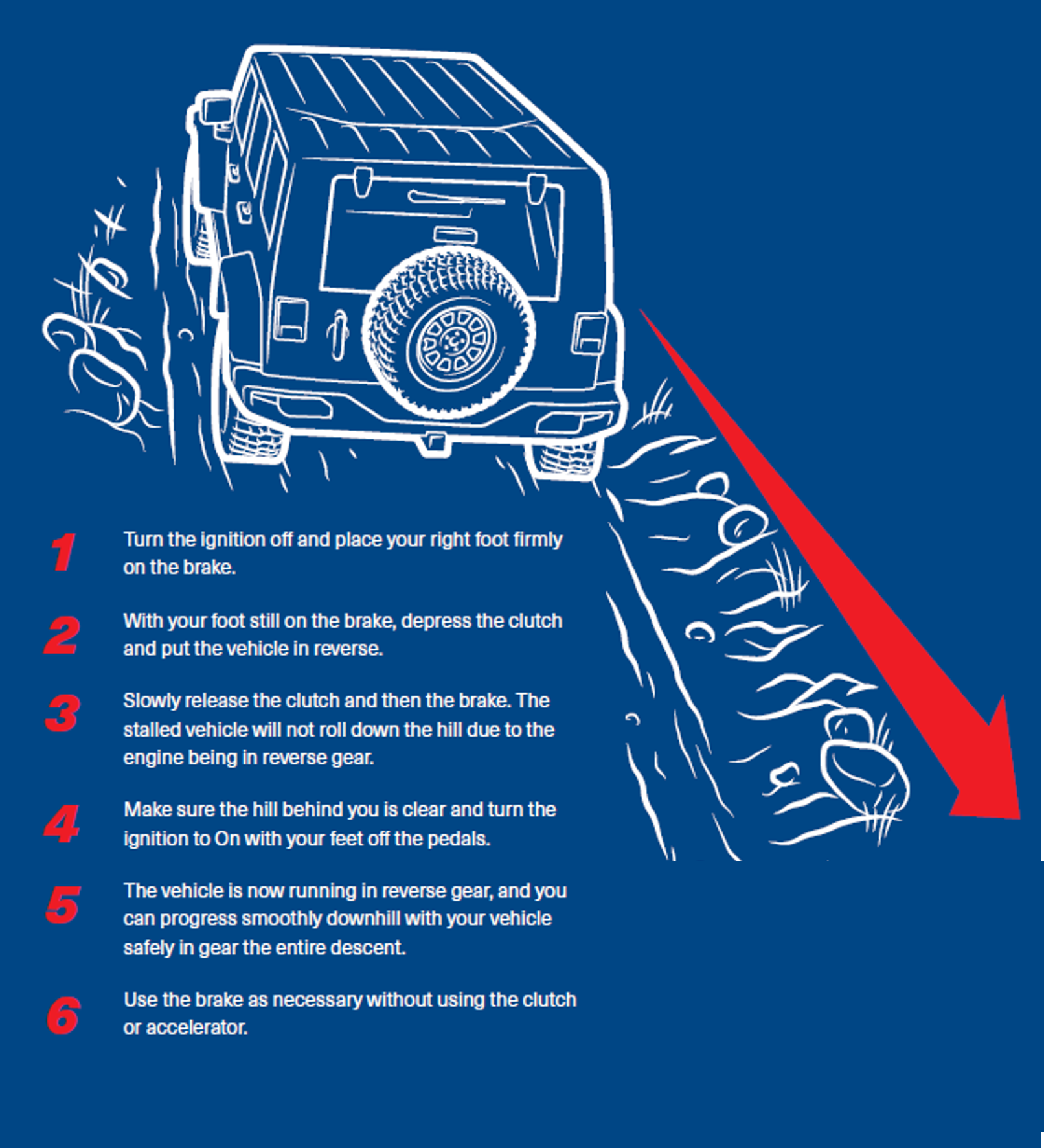
FOUR-WHEEL DRIVE SYSTEMS
If you’re an off-road enthusiast, it won’t be a question of if you’ll need fourwheel drive, but how soon you’ll need it. Putting your vehicle into four-wheel drive distributes torque and traction to all four wheels to help limit the chances of your vehicle getting stuck. Not all four-wheel drive systems function the same way, so before things start getting hairy in no-man’s-land, you better make sure you know how to use your setup.
PART-TIME 4WD
Part-time 4WD, or on-demand 4WD, is a system that allows 4WD to be called upon when needed. When 4WD is not engaged, the vehicle acts like a 2WD vehicle, with the rear wheels receiving all of the torque. Operating in 2WD provides significantly better fuel economy on the highway. Part-time 4WD vehicles should only be driven in 2WD on-road to avoid transmission wind-up. When engaged in 4WD, part-time systems will not allow the front and rear axles to operate at different speeds because there’s not a differential in the transfer case. A part-time 4WD vehicle can operate in 2WD, 4WD High and 4WD Low.
FULL-TIME 4WD
Full-time 4WD, or permanent 4WD, is a system that powers all four wheels at all times. A differential in the transfer case makes it possible to be in constant 4WD on all surfaces. This differential prevents transmission wind-up by enabling the front and rear driveshafts to rotate at different speeds. When you turn, this allows the inside tire to slow down and the outside tire to speed up. Many full-time rigs have a center differential lock, which may be controlled by an electronic traction control system or a manual lock. A full-time 4WD vehicle can operate in 4WD High and 4WD Low.
PUTTING IT IN FOUR-WHEEL DRIVE
Engaging 4WD is done by the transfer case, which transfers power from the driveshaft to the front and rear axles. With an older vehicle, you may need to come to a complete stop and put your vehicle in neutral or park before manually shifting into 4WD with a gear stick or lever. In modern vehicles,
4WD can be engaged with just the push of a button. There are many types of 4WD systems, and each will work slightly differently. Check your owner’s manual to ensure that that you know how to properly use your 4WD system.
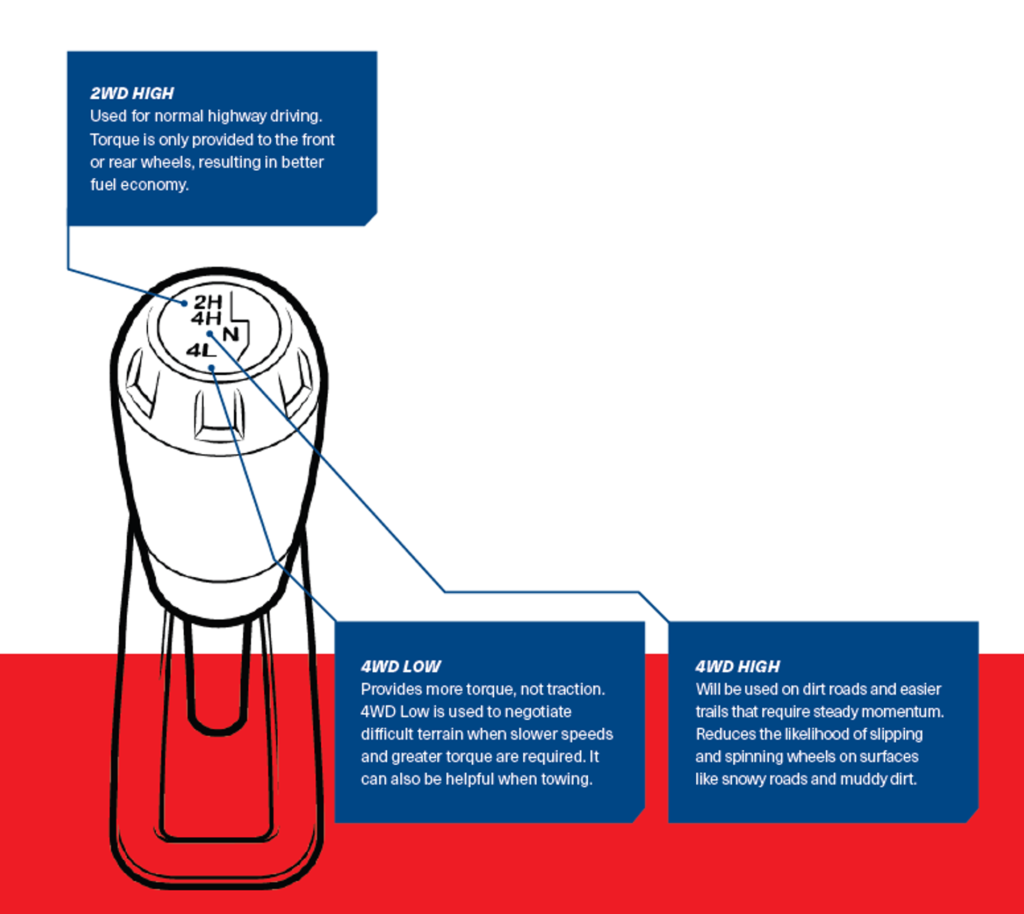
ALL-WHEEL DRIVE
Like vehicles with full-time 4WD, AWD vehicles utilize a center differential to deliver power to all four wheels. But most AWD vehicles don’t have a transfer case that splits and locks the power 50/50 front to back, so they will operate like front-wheel drive vehicles most of the time – only delivering torque to the rear wheels as needed. Automatic sensors determine when a wheel is losing traction and applies torque to the wheels that have traction. AWD is primarily used on-road. It may help in some light off-road situations, but should not be confused with a truly 4WD-capable vehicle.
TRACTION CONTROL
Many newer vehicles come equipped with some version of traction control. Traction control will keep the vehicle moving forward by alerting the computer to brake as necessary in order to keep the wheels from spinning and losing traction. It may have a simple on/off switch or come with multiple settings. Refer to your owner’s manual to learn more about its capabilities.
DIFFERENTIALS
If it weren’t for differentials, driving would be incredibly difficult. Differentials are designed to allow wheels on a single axle to move at different speeds. This is important when cornering, because the outside wheels must spin faster than the inside wheels, since they have a greater distance to travel in a shorter amount of time. Without the differential, the inside tire would break traction and possibly cause the vehicle to skid. This is hard on the tires and drivetrain components, not to mention the lack of control around corners.
OPEN DIFFERENTIALS
For the same reason that open differentials are great on the highway, they can cause severe headaches off-road. The torque flow in open differentials takes the path of least resistance. If one wheel is on the road and the other is in the mud, all the torque will go to the wheel in the mud – which is exactly what you don’t want to happen. Luckily, manufacturers have developed solutions to combat this problem.
LOCKING DIFFERENTIALS
For four-wheelers who aren’t looking to mess around, locking differentials take the guesswork out of the equation. When a locker is engaged, equal power is distributed to each wheel, regardless of the traction it has. In situations where traction is hard to come by, this ensures that any wheel with a hint of traction can do its part to help move the vehicle. Locking differentials come two ways – driver-controlled or automatic – and depending on the vehicle, the locking differential might only be on the rear axle (with an open or limited slip differential on the front). Or, you could have locking differentials on both the front and rear axles for the ultimate trail ride. Lockers on both axles make sure all four tires have the same amount of power, whether one tire is in a rut, all four tires are in mud or two tires are in the air.
LIMITED-SLIP DIFFERENTIAL
A limited-slip differential works a lot like an open differential, except for one big difference. Instead of sending 100% of the torque to the tire with the least resistance, it will automatically send some torque to the tires with the most traction, enabling your vehicle to move forward.
VEHICLE MODIFICATIONS
It’s not hard to spot a poser in a trickedout rig that only drives to the mall. You can’t entirely blame them – a vehicle is a badge of honor – but a lot of money can be sunk into uneducated purchases. Wait to make any drastic modification decisions until you’ve taken your vehicle out on a trail. Only then will you better understand what mods are needed. A rig meant for rock crawling doesn’t need the same equipment as one meant for overlanding. And before you buy, it’s always best to talk to experienced drivers or join one of the many community forums to read what others in the sport are doing.
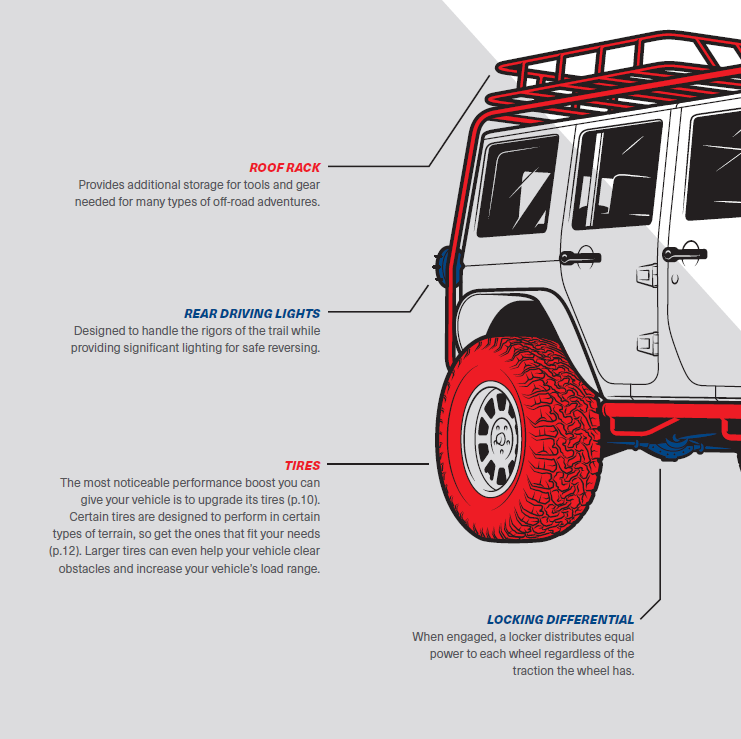
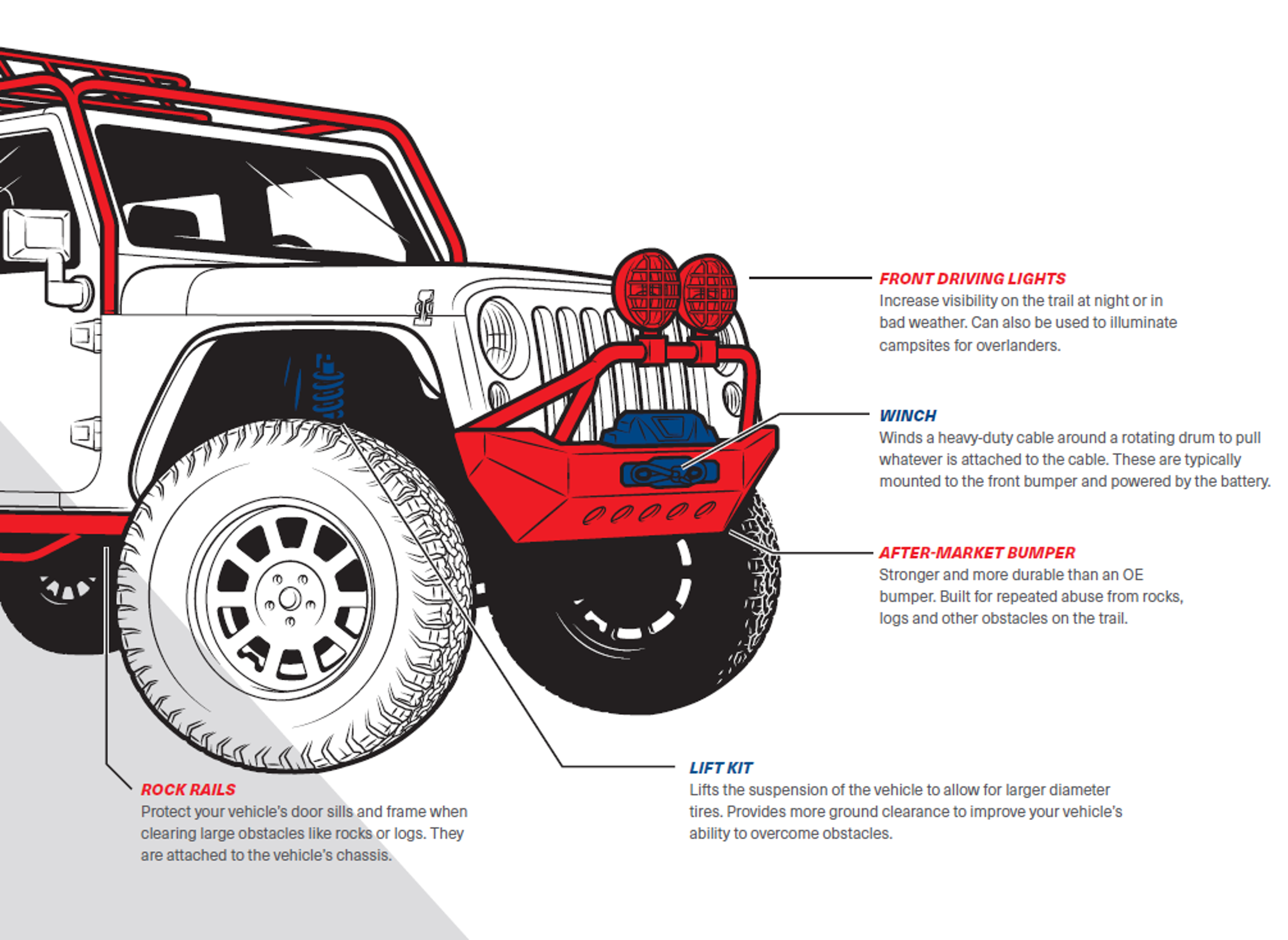
NEED MORE HELP TO PLAN A TRIP
Our Trip Planning section gives lots of helpful information to get you started.




